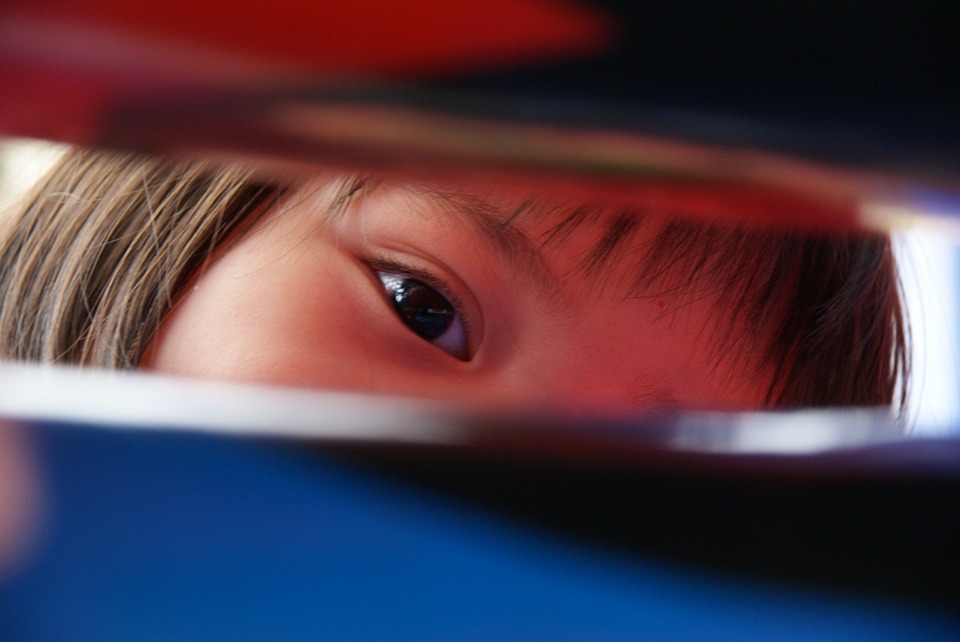Did you know that almost 80% of what kids learn in school is taught visually? Which suggests that if your child has an uncorrected vision problem, it could severely affect his or her development.
Good vision is, therefore, essential to every child’s overall development. An eye exam can assure the parents that their children are healthy enough to grow and succeed well in the classroom.
Warning Signs of Vision Problems in Kids
You probably think that you have a clear understanding of what kids’ eye problems look like: sitting too close to the television, spending a lot of time on screens and electronic devices, squinting, rubbing their eyes, etcetera.
These definitely are symptoms of vision issues: but sometimes, there are no signs your child isn’t seeing well. Here’s what to watch out for:
Refractive errors are the most common cause of eye problems among school going children. Parents, as well as teachers, should be aware of a few signs that can mean the child’s vision needs correction.

Image Source: Pinterest
- Consistently sitting in front of a screen or holding a book too close
- Frequent eye rubbing
- Recurrent headaches
- Complaining of tired eyes
- The appearance of semi-transparent blobs, threads or spots in one or both eyes (Although the appearance of floaters is rare in children)
- Sensitivity in eyes
- Frequent tearing
- Tilting the head to see better
- Closing an eye to read better or using a finger to guide the eye when reading
Silent Symptoms: Vision Problems in Children
People believe that uneven focus or slightly wandering eye may not seem that alarming, but they might not be aware that if the condition goes untreated, the child’s stronger eye – one that sees better – can slowly become the dominant one. Not just that! By the age of 9 or 10, vision loss in the weaker eye can become more permanent.
So, let’s have a look at the 2 most common vision problems in kids that generally emerge between 18 months to 4 years old so that parents’ have a better understanding of vision problems in children.
- A crossed or wandering eye troubles 3 to 5 % of children. Though the child might not complain of blurry vision, but in such a case, you’ll notice that the child’s eyes do not move together or are inable to gauge depth.
- Uneven focus is when one eye is farsighted than the other. It affects 2 to 3 % of kids. This vision problem is hardest to detect because young children don’t realise their vision is compromised.
Lazy eye or Ambylopia doesn’t have to happen as it can be caught with a vision screening, and can be stopped and reversed.
Vision Test and Screening: How Often?
According to the experts, children should have an eye exam by no later than 6 months old, then again by the age of 2 years, and just before starting school. School-age children must have an eye checkup every year.
Doctors have different opinions as to who should do vision tests for children. Some pediatricians and ophthalmologists feel that vision screening should be a part of a child’s regular pediatric check-ups – with referral to an eye care specialist if problems are noted.
Optometrists, on the other hand, suggest more frequent eye examination by an eye care professional. If the initial screening finds a vision problem – the next step is having a more in-depth examination done by an ophthalmologist.
- If that screening uncovers amblyopia, the treatment may include eye patches or eyedrops, prescription lenses, or surgery.
- In the case of eye floaters, generally they go away by themselves without any eye floater treatment, but it can take weeks and months to dissipate.
Improving Your Child’s Vision: How Long Will It Take?
- Vision treatments generally last until the weak eye is better. For most children, it means wearing a patch for about a year or longer. For some kids, the treatment can take a little longer while the brain slowly makes new connections.
- Eye floaters might not be problematic in the beginning, but sometimes can be an indicator of coming serious health problems. So, if they don’t dissipate with time, make sure you consult the ophthalmologist.
The most popular treatment for eye floaters is a complete vitrectomy, in which the vitreous is completely removed and replaced with a saline solution to maintain the eye’s pressure and shape. However, this is a major process, so ophthalmologists usually perform it in the most severe cases, when floaters significantly affect the patient’s vision.
The most important step that you can take as a parent is to help your child follow through their vision treatment.
Final Thoughts
If your kids show any warning signs listed above, or their eyes change in any way, don’t wait until they are 2-3 years old to get that first vision test.
It’s always better to be on the safe side, so get them checked and make sure everything is alright!

